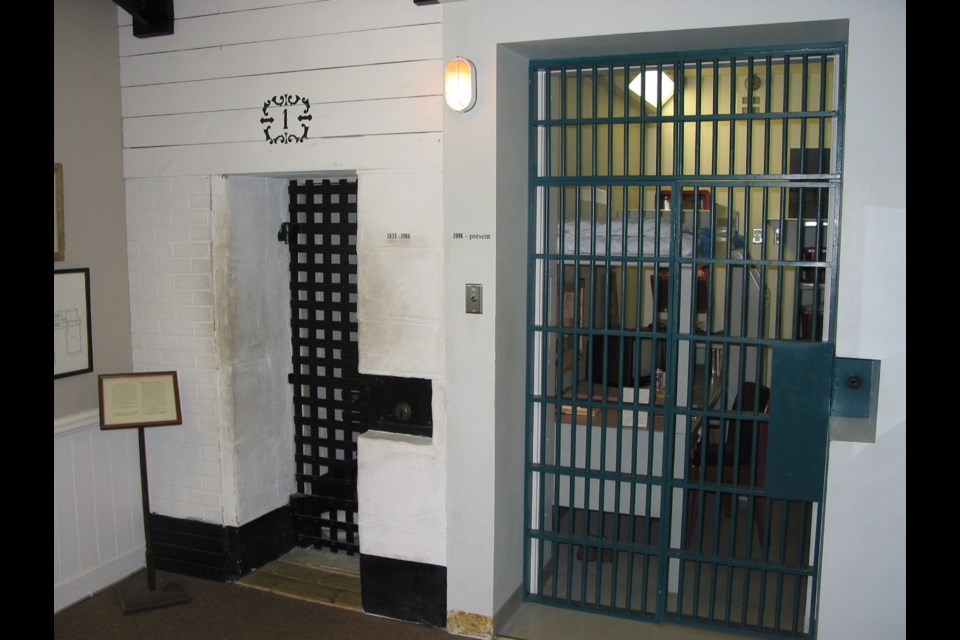Kingston Penitentiary has closed, but its history and that of all prisons nationwide is remembered within Canada’s Penitentiary Museum, a facility which welcomes some 22,000 visitors each year despite—or perhaps because of— its rather dark subject matter.
Kingston Penitentiary represented an important milestone in Canadian history.
While there were jails (or "gaols," in the vernacular of the day) in existence in Canada prior to 1835, the "Provincial Penitentiary of Upper Canada" at Kingston was the first prison in British North America designed to rehabilitate as well as punish offenders of the law.
It’s an important distinction.
Over the years, Kingston Penitentiary housed any number of infamous Canadian criminals, perhaps most famously Edwin Alonzo Boyd, who once held up Bradford West Gwillimbury’s CIBC bank in 1951 (the building now houses Coffee Culture).
In 1990, Kingston Penitentiary was designated a National Historic Site of Canada, but it was nonetheless closed on Sept. 30, 2013.
At the time, Kingston Penitentiary was one of the oldest prisons in continuous use anywhere in the world.
In the shadow of the imposing prison is Canada’s Penitentiary Museum, dedicated to preserving and interpreting the fascinating history of Canada’s federal penitentiary system.
It was founded on the presumption that correctional history is important to understanding any society.
The museum, established in 1967, is housed within the one-time residence of the warden of Kingston Penitentiary and his family.
The museum building was built between 1870 and 1873 using inmate labour and locally quarried limestone. The house, originally named ‘Cedarhedge’ in recognition of the extensive cedar hedges that once lined the entrance drive, once included a greenhouse, vinery, conservatory, coach-house and expansive grounds of manicured lawns and beautifully tended gardens.
In 1933, the house was converted for use as prison administration offices, and in 1978 the elegant outbuildings were removed in order to accommodate a new wall for the Prison for Women located at the rear of the house.
In 1985, the Canadian Penitentiary Museum was relocated here and has since grown to occupy the entire structure.
Displays within the museum cover the spectrum of prison life and operations, dating back to the early 19th century and coming forward to the present today.
Collectively, the exhibits tell the many varied and dramatic stories of the people and places that have contributed to the federal penitentiary system.
“Our artifacts primarily come to us through transfers from federal institutions across Canada and through donations from current and former staff or their families,” explained David St. Onge, the museum’s longtime curator.
“One of our most popular exhibits is our large collection of inmate artwork. In addition, visitors love our audio-exhibit, Kingston Penitentiary is on the Air, which tells the story of the inmate radio show that was broadcast on CKWS radio on Saturday evenings in the 1950s. Our full-scale replicas of Kingston Penitentiary cells from the 19th century are naturally also very popular with visitors.”
St. Onge points out that the museum itself, housed within an attractive Victorian house, is in essence the largest artifact in its collection.
The volunteer staff is primarily composed of retired correctional officers who weave fascinating tales, often based on personal experience, into their talks.
Perhaps spurred by the closure of Kingston Penitentiary and the media attention it engendered, Canadians have shown greater interest in the nation’s prison history of late, and 30,000 people visit the museum on an average year.
Even if we can’t condone their actions, people are almost universally fascinated by criminals.
Canada’s Penitentiary Museum offers an opportunity to learn about some of our nation’s most infamous ne’er-do-wells, how they were incarcerated, and the experiences of those charged with securing and rehabilitating them. It’s a fascinating, occasionally dark story that reveals much about Canada’s history and unique view on justice.
Just the Facts
Hours: May-June 9 a.m. to 5 p.m.; July-August 9 a.m. to 6 p.m.
Phone: 613-530-3122
Email: [email protected]
Location: 555 King St. W., Kingston
Admission: By donation only



